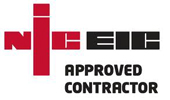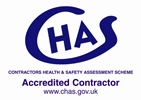Do you need an Electrical Installation Condition report?

The Electricity at Work Act, 1989 states that all electrical systems and equipment used in the working environment (including landlords) should be in a safe condition. The Health & Safety Executive recommend that in order to comply with the regulations an electrical inspection and testing programme should be undertaken at all places of work.
What is Electrical Installation Testing?
Electrical Installation Testing involves both visual and electrical testing of all your electrical systems. This includes but is not limited to distribution boards, sockets, fixed plant, main panels lighting, fixed wiring etc.
Electrical Installation Testing may also be known as:
- Electrical Installation Condition Reporting
- Periodic Testing
- Landlord Electrical Safety Certificate
- Periodic Inspection & Testing
- Fixed Wire Testing
- Test & Inspection
- Fixed Testing
- Hard Wire Testing
- Electrical Testing
Once conducted the results of your periodic inspection and testing will be recorded on an Electrical Installation Condition Report and issued to you for safe keeping. The report will include the extent of the work, limitations, details of any defects and dangerous conditions, and schedules of inspections and test results.
This report is proof that you are taking the necessary steps to meet your legislative obligations under the Electricity at Work Act, 1989
Where a fault or dangerous condition is identified this will be reported immediately with observations recommendations and costs for correction. Recommendations and observations will be reported using a system to indicate the severity of each observation.
How often is a periodic inspection & testing required?
The frequency of periodic inspection and testing is determined by taking into account the type of installation, its use and operation as well as the frequency of maintenance. Also considered would be any external influences.
The following table provides some guidance on how often your electrics should be inspected and tested, but talk to us for advice on your specific setup.
Type of Installation |
Routine Checks |
Maximum Period Between Inspection & Testing |
| Agricultural and Horticultural | 1 year | 3 years |
| Holiday Parks | 6 months | 1 year |
| Churchs | 1 year | 5 years |
| Cinemas | 1 year | 1-3 years |
| Commercial | 1 year | change of occupancy/5 years |
| Construction Site Installations | 3 months | 3 months |
| Domestic | N/A | change of occupancy/10 years |
| Educational Establishments | 6 months | 5 years |
| Emergency Lighting | daily/monthly | 3 years |
| Fire Alarms | daily/weekly/monthly | 1 year |
| Fish Farms | 4 months | 1 year |
| Highway | as convenient | 6 years |
| Hospitals | 1 year | 5 years |
| Industrial | 1 year | 3 years |
| Laboratories | 1 year | 5 years |
| Laundrettes | 1 month | 1 year |
| Leisure Centres/Complexes | 4 months | 3 years |
| Marinas | 4 months | 1 year |
| Offices | 1 year | 5 years |
| Petrol Stations | 1 year | 1 year |
| Places of Public Entertainment | 1 year | 5 years |
| Public Houses | 1 year | 5 years |
| Residential Accommodation | 1 year | change of occupancy/5 years |
| Restaurants & Hotels | 1 year | 5 years |
| Shops | 1 year | 5 years |
| Swimming pools | 4 months | 1 year |
| Theatres | 1 year | 3 years |
| Village Halls/Community Centres | 1 year | 5 years |
What will be tested?
For full details of everything that is covered with an IT Electrical Contractors EICR, please call us or complete the Quick Quote Enquiry.
As a brief summary, your Electrical Installation Testing will include both observation and testing to ascertain:
- The adequacy of earthing and bonding arrangements
- The suitability of the consumer unit and other control equipment
- The type(s) of wiring system, and its condition
- The serviceability of equipment, including accessories
- The presence of adequate identification and notices
- The extent of any wear and tear, damage or other deterioration
- Changes in the use of the premises that have led to or might lead to, deficiencies in the installation.
The methods employed to achieve this are:
Visual inspection:
Before electrical testing commences the electrician will undertake a visual inspection to ensure no parts of the installation are visibly damaged or otherwise defective. The electrician will verify all installed equipment and material is of the correct type and rating for its use
The Electrical tests will include, but won’t be limited to:
- Continuity testing
- Insulation resistance testing
- Polarity testing
- Earthing arrangement testing
- Earth fault loop impedance testing
- RCD testing
What will the Electrical Condition Report contain?
Following the completion of your periodic electrical inspection and test programme the client should be provided with a full and detailed Electrical Installation Condition Report for the works carried out.
Following completion of your Electrical Inspection Testing you will be provided with a comprehensive Electrical Inspection Condition Report (EICR).
The report will include:
- Client, location and installation details
- Extent and limitations of the inspection
- The supply characteristics and particulars of the installation
- A schedule of items inspected and tested
- Schedules of circuit details and test results
- A Summary of the inspection and test
- Our Observations and recommendations for actions to be taken
- Signed declaration by the contractor
Your report will meet the necessary requirements for insurance companies and other legislative bodies and will meet recognised NICEIC formats, and will be conducted to comply with BS7671






